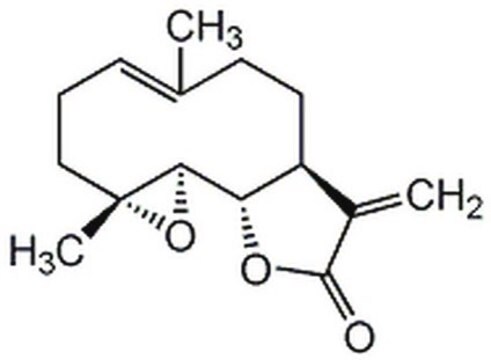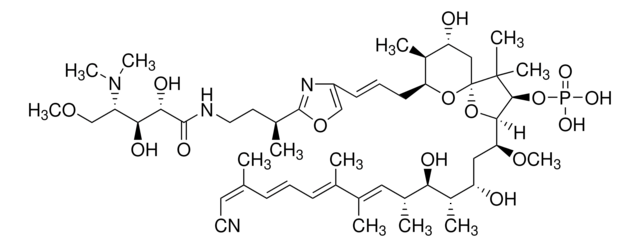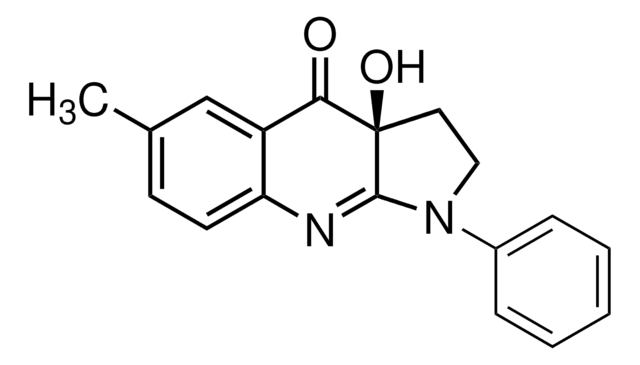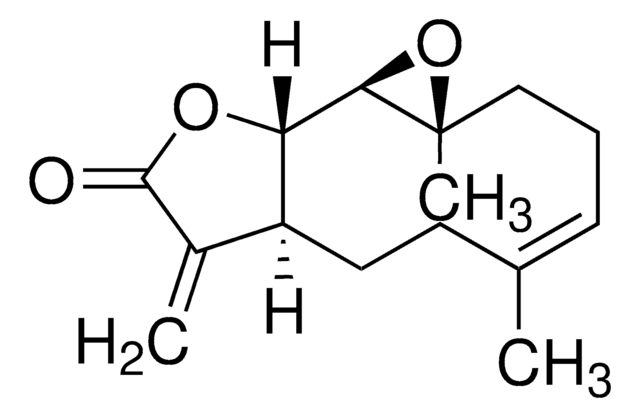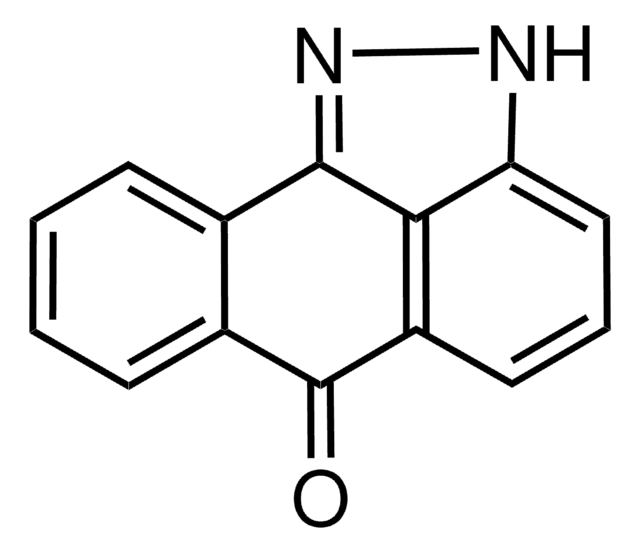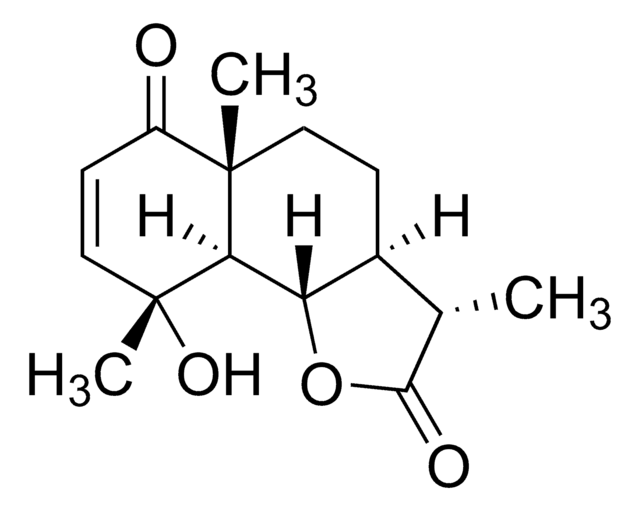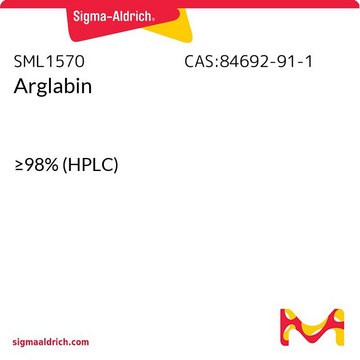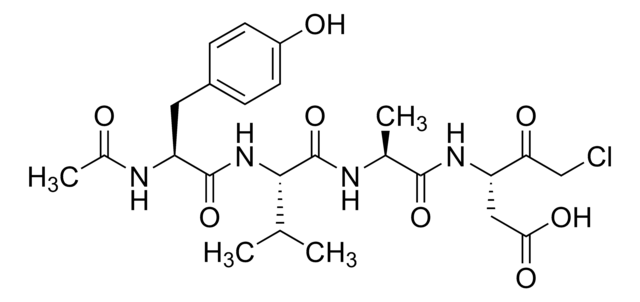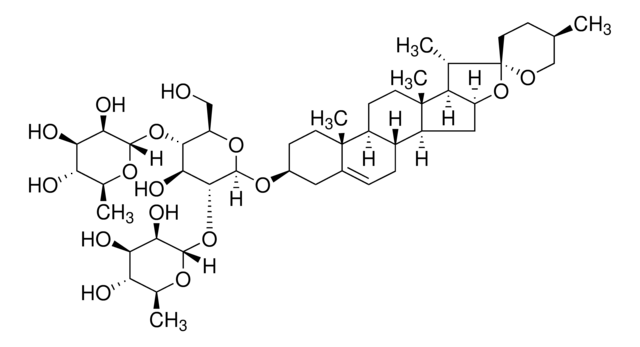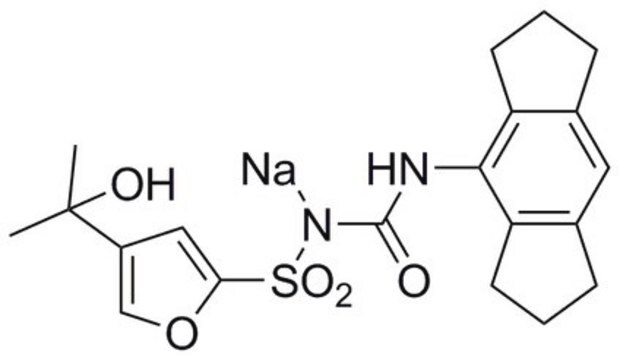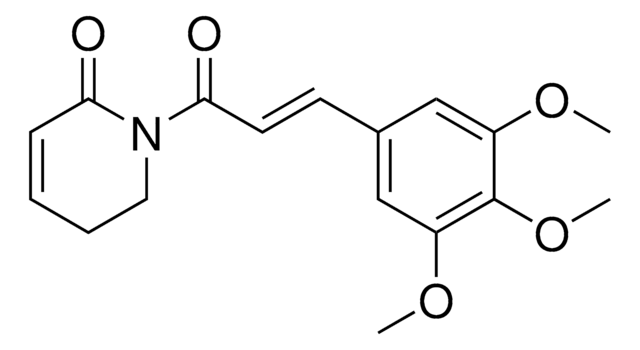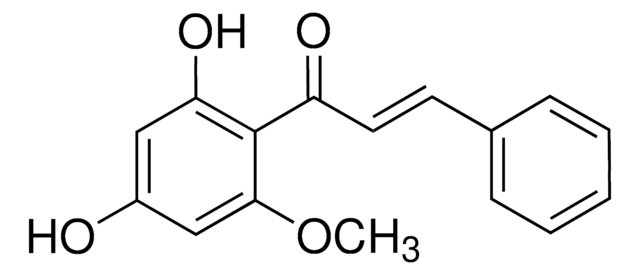About This Item
Recommended Products
Quality Level
assay
≥98% (HPLC)
form
powder
mp
115-116 °C (lit.)
storage temp.
2-8°C
SMILES string
C/C(CC[C@]12[H])=C/CC[C@]3(C)[C@H](O3)[C@]1(OC(C2=C)=O)[H]
InChI
1S/C15H20O3/c1-9-5-4-8-15(3)13(18-15)12-11(7-6-9)10(2)14(16)17-12/h5,11-13H,2,4,6-8H2,1,3H3/b9-5-/t11-,12-,13+,15+/m0/s1
InChI key
KTEXNACQROZXEV-ZRPLFPEYSA-N
Gene Information
human ... ELA2(1991) , IKBKG(8517) , NFKB1(4790) , NKAP(79576) , NKRF(55922)
Looking for similar products? Visit Product Comparison Guide
Application
- in the crystallization with vasohibin 1 (VASH1) to study tubulin detyrosination inhibition
- as an inhibitor of nuclear factor κ-light-chain-enhancer of activated B cells (NF-κB) and signal transduction and activation of transcription (STAT) inhibitor to study its effects on the cytoadhesion of CD36-binding Plasmodium falciparum-infected erythrocytes (IECD36)
- as a lipophilic agent to study its effects on the production of interleukin?13 and interferon?γ by peripheral blood-derived CD8+ T cells
Biochem/physiol Actions
Other Notes
signalword
Warning
hcodes
pcodes
Hazard Classifications
Skin Sens. 1
Storage Class
11 - Combustible Solids
wgk_germany
WGK 3
flash_point_f
Not applicable
flash_point_c
Not applicable
ppe
Eyeshields, Gloves, type N95 (US)
Choose from one of the most recent versions:
Already Own This Product?
Find documentation for the products that you have recently purchased in the Document Library.
Customers Also Viewed
Articles
Chronic inflammation is an underlying factor in the development and progression of many of the chronic diseases of aging, such as arthritis, atherosclerosis, diabetes, and cancer.
Cancer stem cell media, spheroid plates and cancer stem cell markers to culture and characterize CSC populations.
Our team of scientists has experience in all areas of research including Life Science, Material Science, Chemical Synthesis, Chromatography, Analytical and many others.
Contact Technical Service